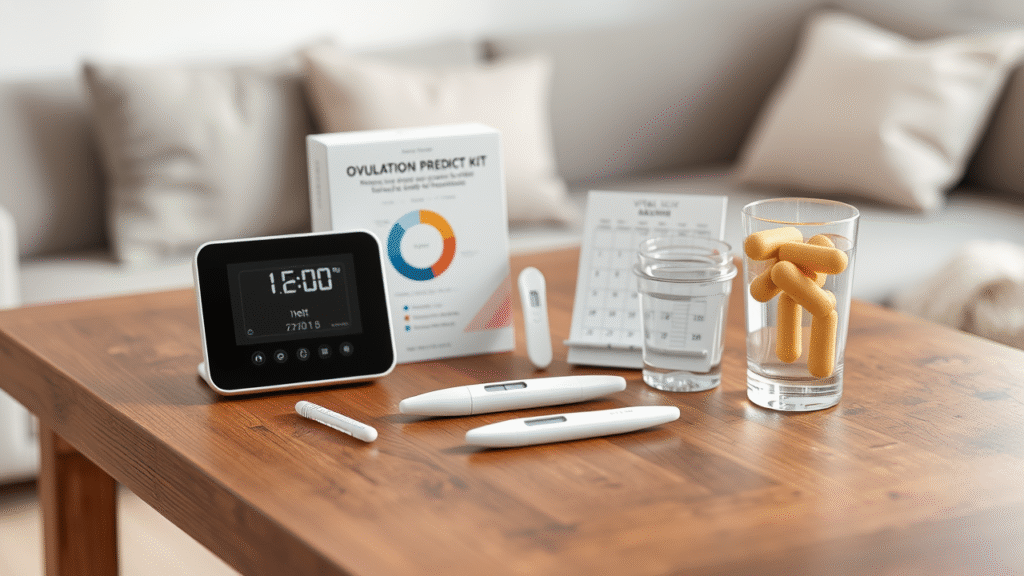Female fertility cycles are complex, dynamic processes that influence a woman’s ability to conceive. Understanding these cycles involves more than just tracking dates—it means recognizing the hormonal shifts, physical signs, and timing of ovulation that shape fertility. This guide explores the biology behind these cycles, key symptoms to watch for, and effective methods to monitor your fertile window. We also delve into how lifestyle choices impact fertility, the challenges of irregular cycles, variations across life stages, and the importance of emotional well-being throughout this journey. Each aspect offers essential insight for anyone looking to navigate their reproductive health with confidence.
The Biology Behind Female Fertility Cycles: Hormones and Phases Explained
The biology behind female fertility cycles centers on the dynamic interplay of hormones and the distinct phases they govern, creating a rhythmic pattern essential for conception. Estrogen and progesterone orchestrate the menstrual cycle’s four main stages: menstruation, the follicular phase, ovulation, and the luteal phase. These hormonal fluctuations trigger physical changes in the body—such as cervical mucus consistency and basal body temperature shifts—that serve as key fertility signs highlighted in other sections like “Identifying Key Fertility Signs.” Understanding these biological mechanisms deepens insight into ovulation timing, crucial for maximizing conception chances discussed under “The Role of Ovulation Timing.” Moreover, this hormonal balance can be influenced by lifestyle factors explored later in the blog, including diet and stress. Awareness of these underlying processes also helps explain irregular cycles and variations across life stages covered in subsequent sections, providing a comprehensive foundation for effective fertility tracking and emotional well-being throughout the journey.
Identifying Key Fertility Signs: Physical Symptoms and Body Signals to Monitor

Identifying key fertility signs involves tuning into subtle physical symptoms and body signals that reveal when ovulation is approaching or underway. These indicators, such as changes in cervical mucus texture, basal body temperature shifts, and mild pelvic sensations, offer invaluable clues within the broader context of female fertility cycles. Understanding these signs complements knowledge from the biology of hormones and cycle phases, providing a practical way to pinpoint fertile windows without relying solely on external tools. Tracking these natural signals enhances accuracy beyond common monitoring methods like apps or ovulation kits. Being aware of how lifestyle factors like stress or diet can alter these body cues also deepens insight into personal fertility patterns. For those facing irregular cycles or transitioning through life stages, recognizing these subtle signs becomes even more critical. This mindful observation supports emotional well-being by fostering confidence and reducing uncertainty during the fertility journey.
Common Fertility Tracking Methods: Tools and Techniques for Accurate Monitoring
Accurate fertility tracking relies on a variety of tools and techniques designed to monitor the subtle changes in a woman’s cycle. Common methods include basal body temperature charting, which involves daily temperature readings to detect the slight rise after ovulation, and cervical mucus observation, where changes in consistency signal peak fertility. Ovulation predictor kits measure luteinizing hormone surges, providing a precise window for conception. These techniques complement the understanding gained from observing physical symptoms highlighted in ‘Identifying Key Fertility Signs’ and align closely with insights about hormonal shifts detailed in ‘The Biology Behind Female Fertility Cycles.’ By integrating these methods, women can better time intercourse as discussed in ‘The Role of Ovulation Timing.’ For those experiencing irregular cycles or variations due to life stages, such as adolescence or perimenopause covered later in the blog, tailored approaches ensure more reliable monitoring. Ultimately, combining these tools supports both biological awareness and emotional well-being during this intimate process.
The Role of Ovulation Timing: How It Influences Fertility and Conception Chances

Ovulation timing plays a pivotal role in fertility and conception chances, as it marks the narrow window when an egg is released and ready for fertilization. Understanding this key moment within the broader female fertility cycle helps individuals optimize their chances of pregnancy by aligning intercourse or insemination with peak fertility. This ties directly to tracking physical symptoms and hormonal changes outlined in sections like “Identifying Key Fertility Signs” and using tools described in “Common Fertility Tracking Methods.” Since ovulation timing can vary due to factors covered under “Lifestyle Factors Affecting Fertility Cycles” and may be irregular during certain phases discussed in “Fertility Cycle Variations Across Different Life Stages,” precise monitoring becomes essential. Additionally, grasping how hormones trigger ovulation, as explained in “The Biology Behind Female Fertility Cycles,” deepens understanding of its critical influence on conception. Recognizing these nuances not only aids effective family planning but also supports emotional well-being by setting realistic expectations throughout the journey.
Lifestyle Factors Affecting Fertility Cycles: How Diet, Stress, and Exercise Play a Role
Lifestyle factors such as diet, stress, and exercise significantly influence female fertility cycles by affecting hormonal balance and cycle regularity. Nutrient-rich diets support the biological processes outlined in the section on hormones and phases, ensuring ovulation occurs smoothly. Conversely, chronic stress can disrupt these delicate hormonal rhythms, leading to irregular cycles discussed in the section on irregular fertility cycles. Exercise plays a dual role; moderate physical activity promotes healthy body signals highlighted in identifying key fertility signs, while excessive workouts may hinder ovulation timing and reduce conception chances. Understanding how these lifestyle elements interact helps women optimize their fertility tracking methods for more accurate monitoring. Additionally, managing emotional well-being during this process is vital since stress not only impacts physiology but also affects motivation and consistency in tracking efforts. By integrating awareness of lifestyle influences with knowledge from other sections like ovulation timing and cycle variations across life stages, women gain a holistic perspective to better navigate their unique fertility journeys.
Understanding Irregular Fertility Cycles: Causes, Impacts, and When to Seek Help

Irregular fertility cycles can disrupt the natural rhythm described in sections like “The Biology Behind Female Fertility Cycles” and complicate the process of “Identifying Key Fertility Signs.” Causes range from hormonal imbalances, stress, and lifestyle factors to underlying health conditions, highlighting connections with “Lifestyle Factors Affecting Fertility Cycles.” These irregularities may impact ovulation timing, reducing conception chances as explored in “The Role of Ovulation Timing.” Understanding when your cycle deviates significantly from typical patterns is crucial; tracking methods covered in “Common Fertility Tracking Methods” become even more important here. Irregular cycles often surface during transitional phases discussed in “Fertility Cycle Variations Across Different Life Stages,” such as adolescence or perimenopause. When irregularities cause prolonged delays or unpredictable symptoms, consulting a healthcare provider is advised to address potential issues early. Supporting emotional well-being during this uncertainty, as emphasized in the related section on stress management, helps maintain a balanced approach to fertility tracking and overall health.
Fertility Cycle Variations Across Different Life Stages: Adolescence, Reproductive Years, and Perimenopause
Fertility cycle patterns shift notably across life stages, shaping how women experience and track their reproductive health. During adolescence, cycles often start irregularly as the body establishes hormonal rhythms, making signs less predictable compared to the more stable reproductive years when ovulation timing becomes clearer and physical symptoms like cervical mucus changes are easier to identify. As women approach perimenopause, hormonal fluctuations increase again, leading to cycle variability that can challenge traditional fertility tracking methods discussed earlier in the blog. Understanding these variations is crucial for accurate monitoring and interpreting key fertility signs amid shifting biological phases explained in “The Biology Behind Female Fertility Cycles.” Recognizing life stage differences also highlights why lifestyle factors and emotional well-being play distinct roles at each phase, influencing cycle regularity and overall reproductive health. This context helps readers appreciate why personalized approaches to fertility tracking are essential throughout a woman’s lifespan.
Supporting Emotional Well-being During Fertility Tracking: Navigating Stress and Expectations
Embracing the emotional ups and downs that come with fertility tracking is just as important as understanding the physical signs and hormonal rhythms of your cycle. Managing stress and tempering expectations can create space for greater self-compassion throughout this intimate journey. When paired with knowledge about lifestyle influences, ovulation timing, and cycle variations, emotional well-being becomes a vital thread in the complex tapestry of fertility awareness. At MomDadDispatch.com, we recognize how deeply personal this path is and offer gentle guidance to help you navigate it with clarity and care.






